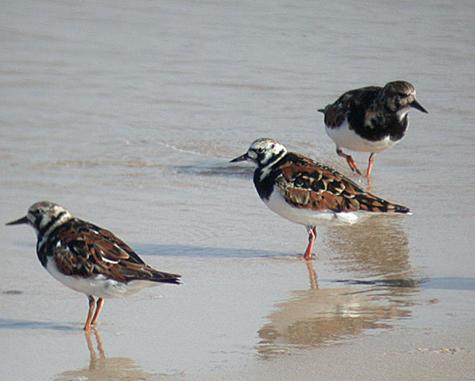
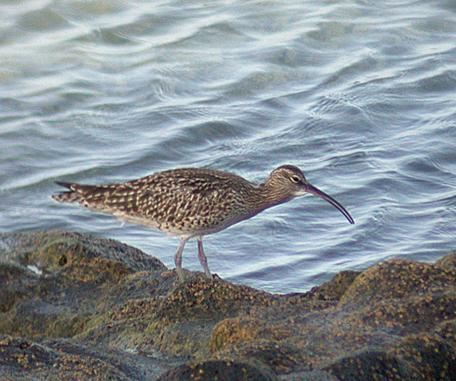
Saturday 3 April
Visited the Gwent Levels Wetlands Reserve at Uskmouth for the first time – very impressive. Saw the drake ring-necked duck on the most SW lagoon (probably the bird at Portbury and Chew last year – now in immaculate breeding plumage), the first 2 swallows of the spring, at least 2 whimbrel, 2 ruddy duck and 2 little egrets. Many reed buntings and several singing Cetti’s warblers in the area. Also saw a weasel. Very windy and heavy rain for much of the time.
Sunday 4 April
Walked around the Bittern trail at Chew with the girls - heard first willow warblers of the year (2) and saw a swallow. Two roe deer at Heron’s Green. Barrow Gurney reservoir later – swallow at Barrow farm, 6 Goldeneye, 2 ruddy duck, 5 chiffchaffs in hedgerows, and ca. 30 fieldfares still present. One red fox seen
7-14 April: Fuerteventura, Canary Islands
Family holiday, based at Lobosol apartments in Corralejo, in the north east of the island. Weather was generally sunny and warm, usually partly cloudy with a couple of short rain showers. Photographs were taken with a Nikon Coolpix 995 and Eagle eye Optic Zoom lens.
Wednesday 7 April
Explored around Corralejo – birds included Atlantic yellow-legged gulls (Larus michahellis atlantis – though some prefer to use this subspecific name only for birds from the Azores), swift sp., whimbrel, many turnstones, hoopoe, and distant Cory’s Shearwaters.


The Atlantic gulls have very dark grey backs, and small primary mirrors, restricted to the outermost primaries on the adult bird below. Note the marked tail band and relatively dark head of the first summer bird.
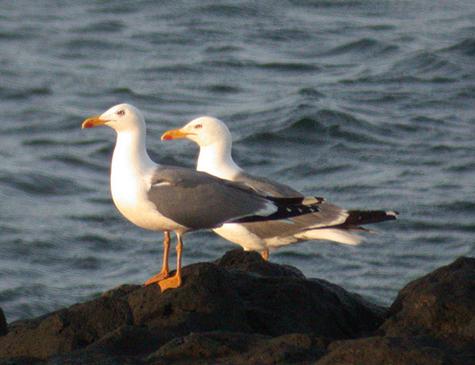
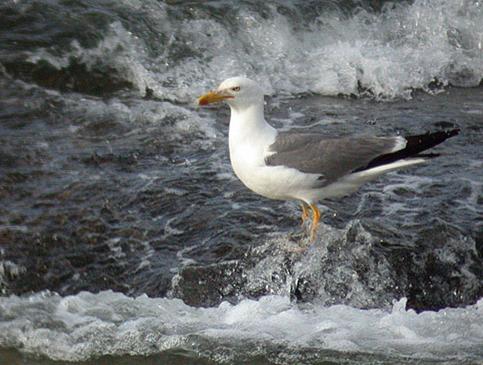
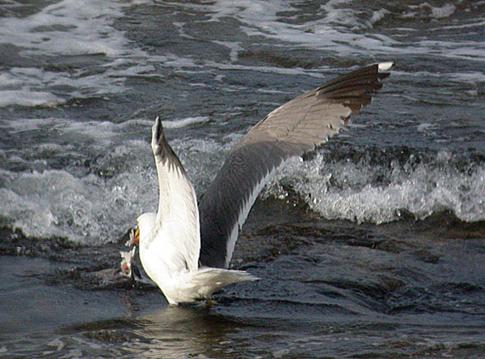
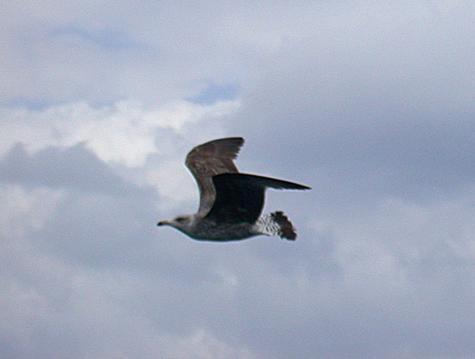
Thursday 8 April
Started a regular routine walking over the national park next to the hotel.
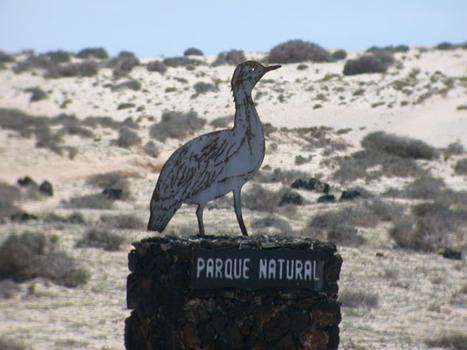
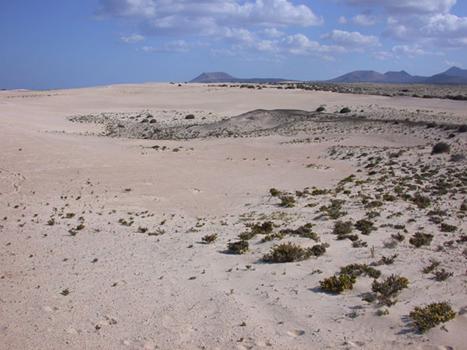
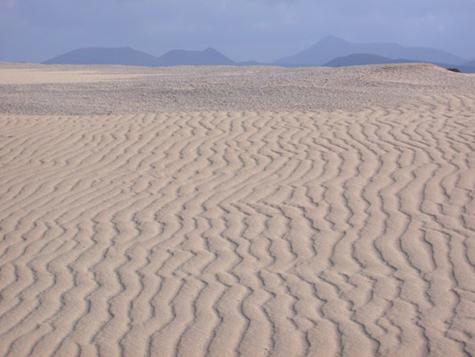
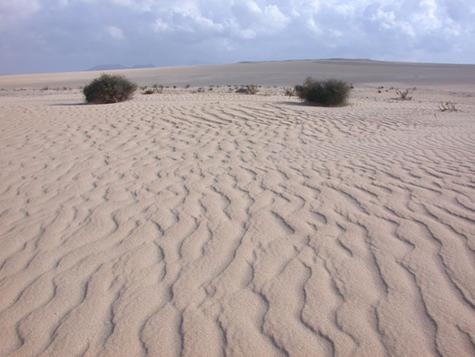
Saw an immature Egyptian vulture, also lesser short-toed larks (left- commonest bird on plains) in song flight, hoopoes, and Berthelot’s pipits (right). Saw one male canary in a flock of linnets – could be an interesting record for Fuerteventura, as I can find no definite records of them there.
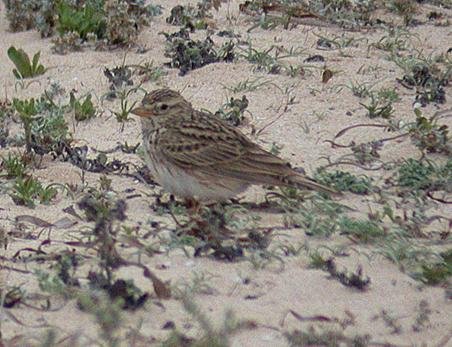
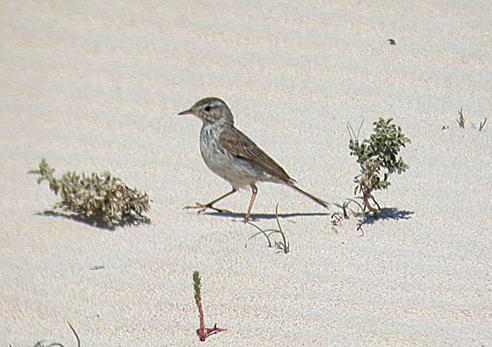
In the afternoon walked to the long, sandy beach south of Corralejo. Photographed southern grey shrike here, saw two Arctic skuas off Lobos, a bird of prey (buzzard-like) flew over Lobos, a summer plumage bar-tailed godwit, and Kentish plovers were common inland of the beach, including one nesting close to the stone shelter that we rested in. the plover did a distraction display when I approached the nest. Note lack of white eyestripe in the shrike (only white above eye).
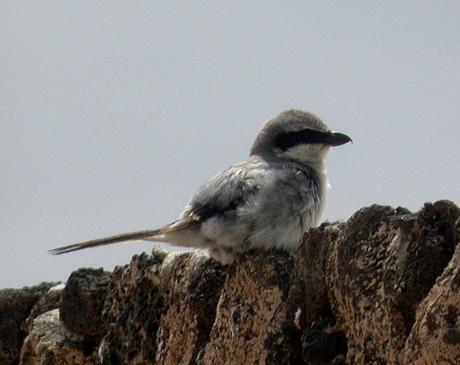

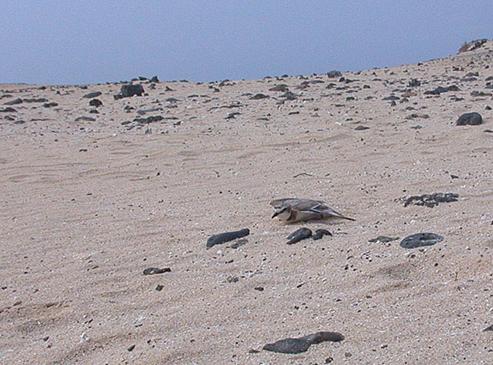
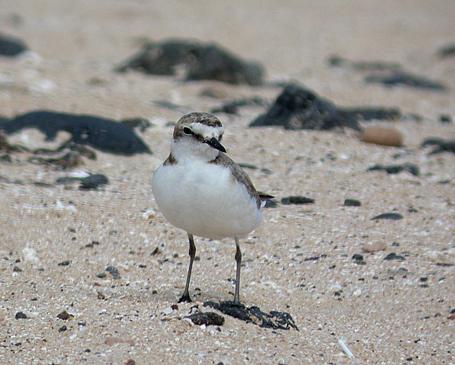
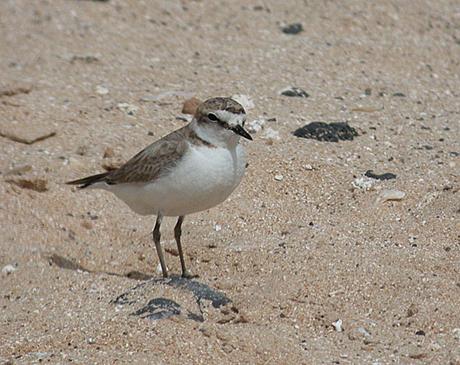
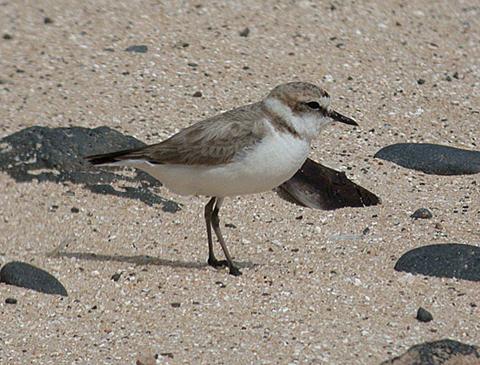
Friday 9 April
Day in town and market. One walk in the desert- only new bird was a kestrel, but found a flock of ca. 20 hoopoes, and photographed a locust and a strange plant.
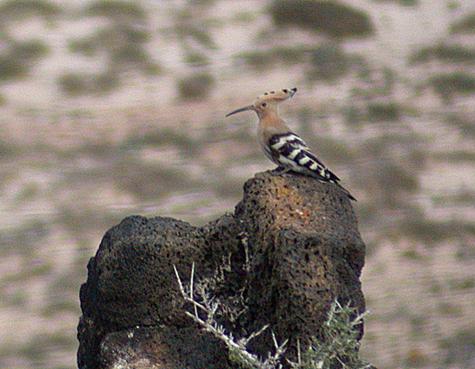
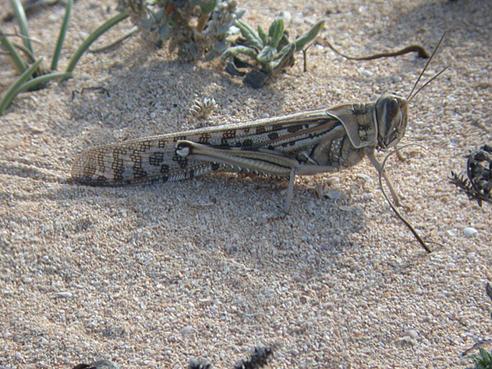
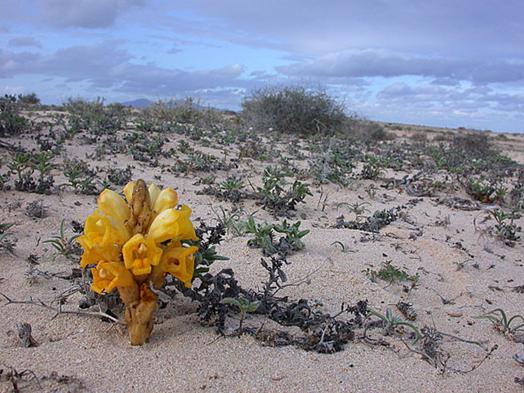
Saturday 10 April
Went on ‘dolphin safari’ from Corralejo harbour, to Lanzarote, them along east cost of Lobos where we finally met a pod of about 20 bottle-nosed dolphins. They stayed with the boat for some time, leaping out of the water and occasionally tail-slapping. Fantastic sight – one mother was followed by a small infant. Had excellent views of Cory’s shearwater also – the dolphins were initially located by heading for a flock of shearwaters.
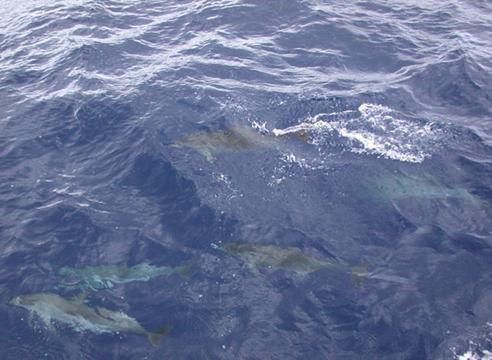
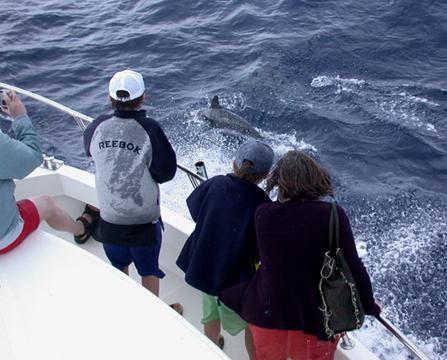
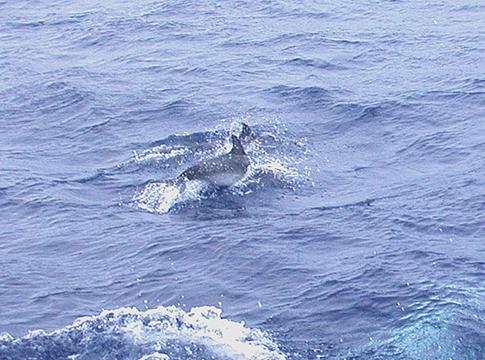
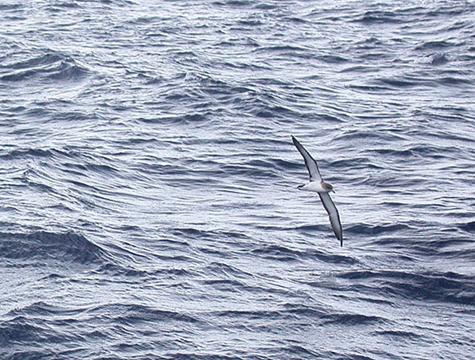
Sunday 11 April
Hired a car and drove to Los Molinos in the morning. Saw turtle dove, trumpeter finch, ca. 5 Canary Island chats (in barranco SE of reservoir), 2 little ringed plover and a raven. On the reservoir there were ca. 15 ruddy shelduck, some with chicks, ca. 5 black-winged stilts, 2 common sandpipers, 1 little ringed plover, 2 greenshank, swallows, 1 house martin, 1 sand martin, and a large flock of 100+ swifts. These seemed to be mainly common swifts, but also included several pallid swifts, and there were some birds that I was certain were plain swifts. Also saw 1 spectacled warbler.
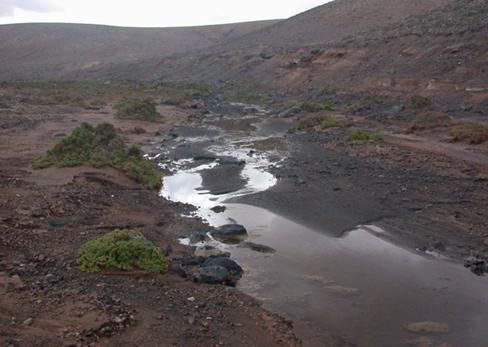
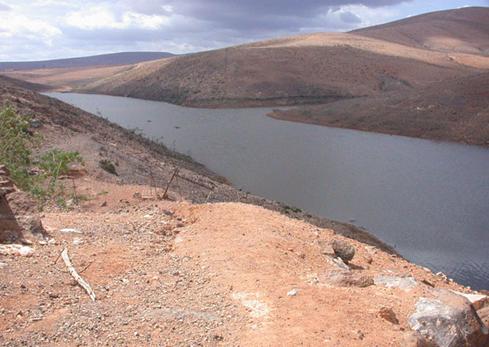
Then drove to Puertito de Los Molinos, and saw a male spectacled warbler, 2 Berthelot’s pipits, raven, and adult Egyptian vulture, 2 Canary Island chats around the rubbish bins, and an immature Barbary falcon flew along the cliffs.
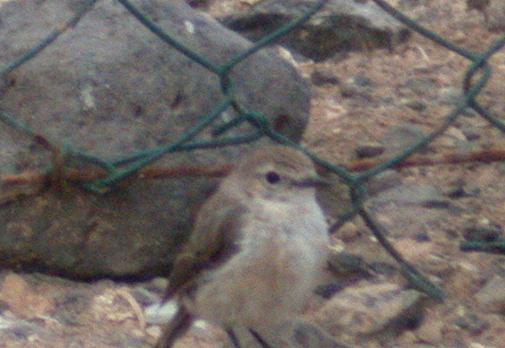
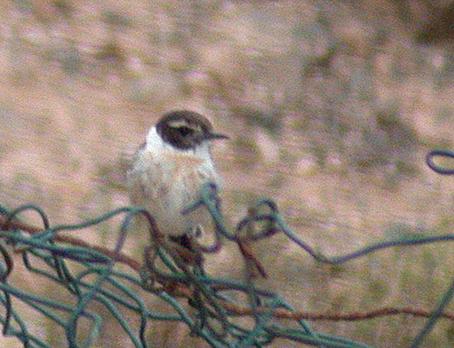
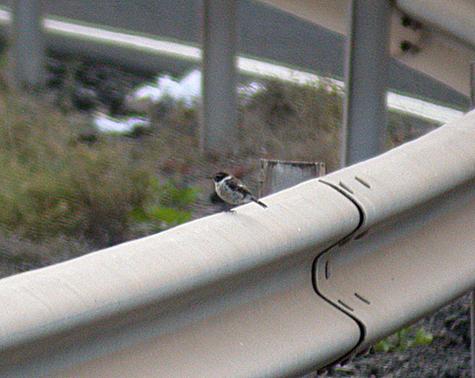
In the afternoon we drove to El Cotillo. Saw a sanderling and a spectacled warbler along the beaches, and then drove south of the town onto the plain. Saw ca. 5 Houbara bustards, ca. 5 cream-coloured coursers, 4 black-bellied sandgrouse, and a raven. I knackered the rental car by driving over some stones and breaking the pipe supplying servo fluid for the power steering, and almost ran out of petrol also. Nevertheless, it was worth it for the birds!
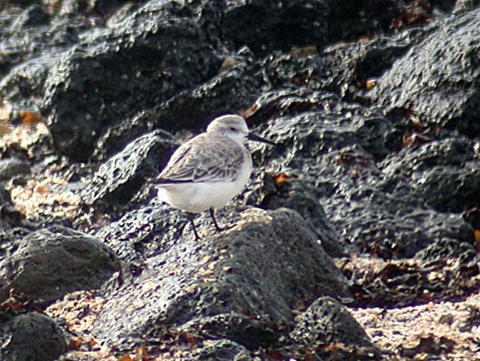
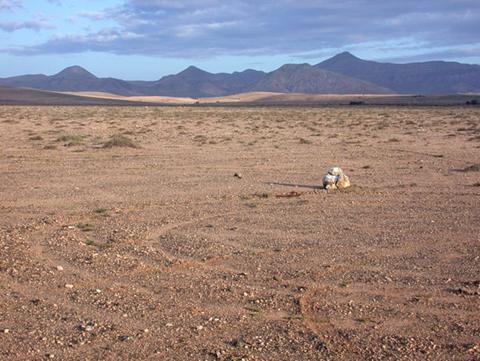
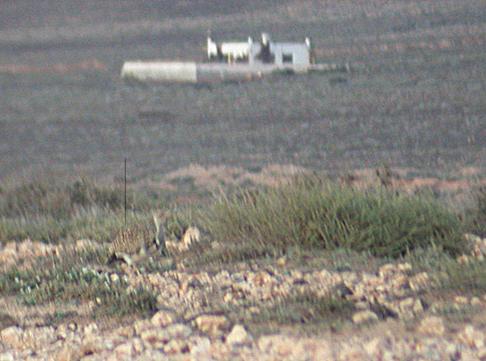
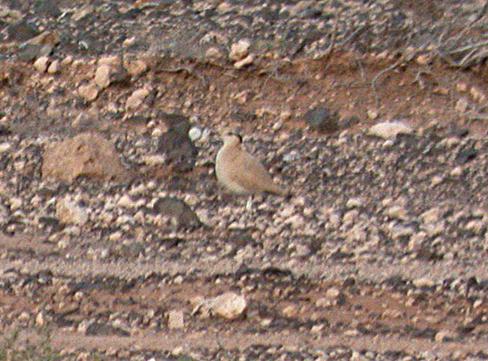
Monday 12 April
Lazy day. Saw a bulbul with a red vent fly from a tall tree outside the Lobosol apartments. It was calling – a loud ‘tee-quit, tee-quit….’ Before it took flight. Photographed a little egret in Corralejo.
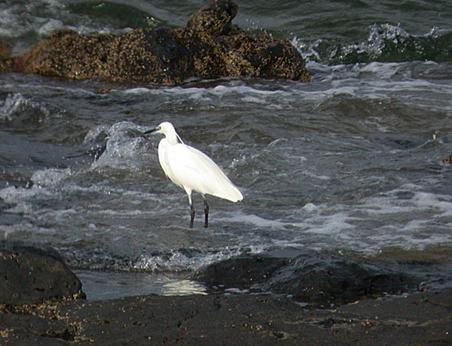
Tuesday 13 April
Had another view of the bulbul on the apartment roofs – the white cheeks confirmed identification as a red-whiskered bulbul, presumably an escape. Now adding an extra syllable to its song ‘tee qua qua….’. Took photos of Spanish sparrows at apartments. Some birds had yellow faces – presumably feeding on plants and getting covered in pollen. After the beach the girls and I wandered back over the national park plain and I saw my last target species – stone curlew, about 200m away from the apartments!
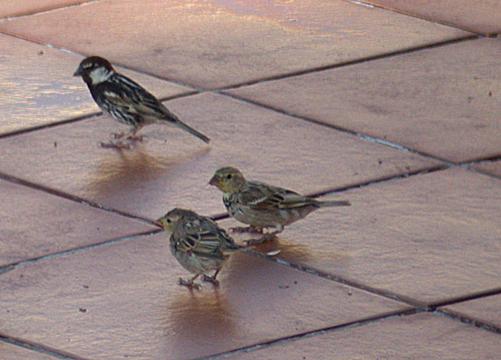
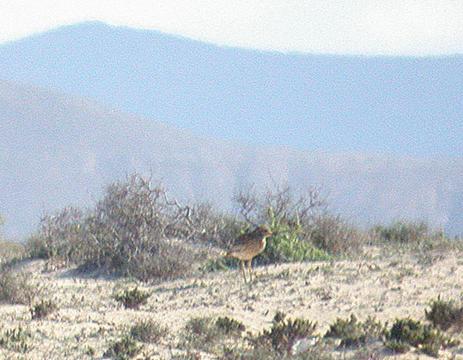
Flew back to Bristol over the Pyrenees on Wednesday 14 April.
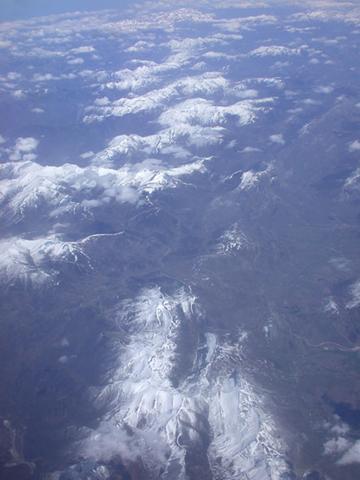
Fuerteventura bird list
Cory’s shearwater – commonly observed in the distance off Corralejo and El Cotillo. Excellent views from the dolphin safari.
Little egret – singles seen on the shore at Corralejo and 2 over Lobos.
Ruddy shelduck- ca. 15 Los Molinos 11/4. including chicks.
Egyptian vulture –immature Corralejo dune reserve 8/4; adult Puertito de Los Molinos 11/4.
Kestrel – several seen.
BARBARY FALCON – immature Puertito de Los Molinos 11/4.
Coot – many at Los Molinos, 11/4.
HOUBARA BUSTARD – ca. 5, south of El Cotillo, 11/4.
Black-winged stilt – ca. 5 Los Molinos, 11/4.
STONE CURLEW – 1 Corralejo nature reserve, 13/4.
CREAM-COLOURED COURSER – ca. 5, south of El Cotillo, 11/4.
Little ringed plover – 3 Los Molinos, 11/4.
Ringed plover – 2 Corralejo 7/4.
Kentish plover – Corralejo and beaches to the south of town, where breeding occurs. Flocks of up to ca. 20 in dunes behind beaches.
Grey plover – singles at Corralejo 7/4; El Cotillo 11/4.
Sanderling – 1, El Cotillo 11/4.
Dunlin – 1 Corralejo 7/4.
Bar-tailed godwit – 1 summer plumage, south of Corralejo 8/4.
Whimbrel – common aroundf Corralejo, single El Cotillo 11/4.
Greenshank – 2 Los Molinos 11/4.
Common sandpiper – 1 Corralejo 7/4; 1 Lanzarote coast 10/4; 2 Los Molinos 11/4.
Turnstone – common around Corralejo.
Arctic skua – 2 between Lobos and beach S of Corraljo, 8/4.
Lesser black-backed gull – a couple seen around Lobosol apartments.
Atlantic yellow-legged gull – common around coasts, bur wary.
BLACK-BELLIED SANDGROUSE – 4 in flight, south of El Cotillo, 11/4.
Feral pigeon – widespread.
Collared dove – widespread (was rare when Clarke & Collins published guide in 1996).
Turtle dove – 1 Los Molinos 11/4.
PLAIN SWIFT – several Los Molinos 11/4.
Common swift – seemed to be the commonest swift in a flock of 100+ Los Molinos, 11/4, but some may be Plain swifts.
Pallid swift – several Los Molinos 11/4.
Hoopoe – widespread, including in open spaces around Correalejo town. Flock of ca. 20 in nature reserve, Corralejo 9/4.
LESSER SHORT-TOED LARK. The commonest bird on the plains south of Corralejo.
Sand martin – 1 Los Molinos 11/4.House Martin – singles at Corralejo and Los Molinos.
Swallow – ca. 50 Los Molinos 11/4; ca. 5 Corralejo 8/4.
BERTHELOT’S PIPIT – widespread.
CANARY ISLANDS CHAT – ca. 5 barranco SE of Los Molinos reservoir 11/4; 2 Puertito de Los Molinos 11/4.
SPECTACLED WARBLER – Singles at Los Molinos, Puertito de Los Molinos, El Cotillo, 11/4.
Southern grey shrike – widespread.
Raven – Singles at Los Molinos, Puertito de Los Molinos, near La Oliva and El Cotillo.
Spanish sparrow – widespread.
CANARY – I with Linnets, plain S of Corralejo 8/4.
Linnet – common on plains S of Corralejo.
Trumpeter finch – several at Los Molinos.
Red-whiskered bulbul – 1 at Lobosol, 12-13/4. 47 species, including bulbul – includes 10 lifers. Not bad for a family holiday.
Thursday 15 April
Late afternoon visit to Chew – first house martins (2 amongst 100+ sand martins) and common sandpiper of the year. Hobby flying through Barrow Gurney.
Saturday 17 April
Chew valley lake – lots of hirundines, 2 common sandpipers and a redshank.
Sunday 18 April
Shapwick Heath/ Ham Wall - first whitethroats and swifts of the year (two of each) – also chiffchaffs (left), blackcaps, willow warblers, a hobby, and 8 whimbrel overhead. Many sand martins passing through.
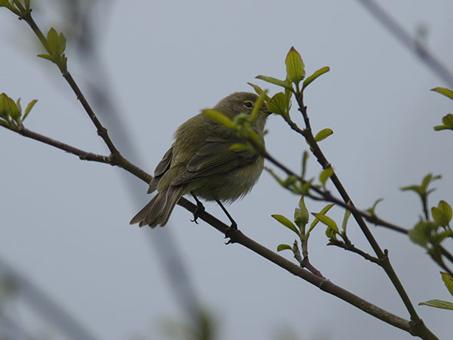
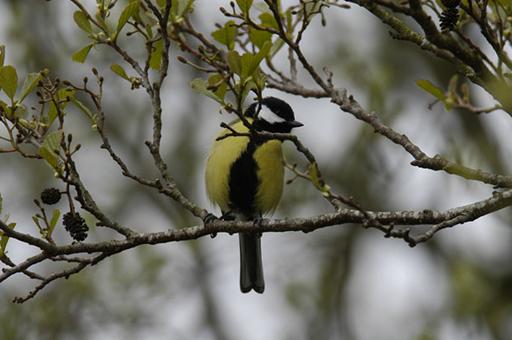
Wednesday 21 April
Barrow tanks in evening – 2 common sandpipers, 1 summer plumage dunlin, 1 ruddy duck, and a lesser whitethroat identified mainly by call.
Saturday 24 April
Hot, sunny day. Female sparrowhawk and a hobby over garden this morning, and house martins now in the area. Orange-tips and brimstones in the garden, and a robin nest with at least 4 chicks in the cypress next to the conservatory. . In the afternoon drove to Cardiff bay where a Bonaparte’s gull has been seen for the past few days (and this morning). Not there this afternoon though! Saw a whitethroat (singing) and 3 Mediterranean gulls (2 1st summer, 1 2nd summer). Also dipped on whiskered tern at Shapwick and woodchat shrike on the Gwent levels!
Sunday 25 April
Spent early morning (7-9.00 h) and evening (18.30-20.30 h) at Shapwick. In morning saw 2 red-legged partridges on the old Bristol road past Milton Lodge, just above Wells. At Shapwick no-one saw the whiskered tern, but did see an immature female marsh harrier, reed warbler, sedge warbler, 2 Cetti’s warblers (below), a lesser whitethroat, 2 cuckoos, and a kingfisher (last 3 at Ham wall). Good views of 2 roe deer (fawn and buck in velvet)
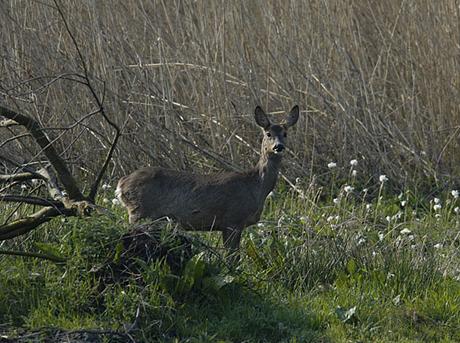
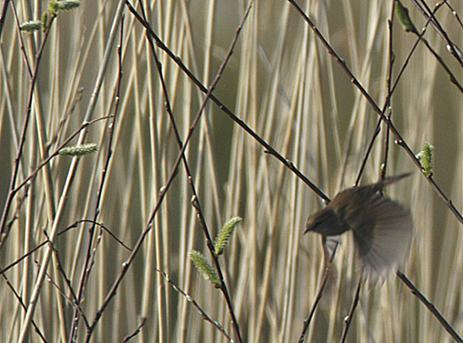
In the evening, the WHISKERED TERN was fantastic – it is in habitat just right for this species, and hawked insects over Noah’s Lake. A buck roe deer fed just outside the lake; also saw Cetti’s warbler, a pair of greylags with 4 goslings, garden warbler, 2 cuckoos and at dusk a hobby and the whiskered tern fed over a wonderful sunset. At dusk a cuckoo was calling at Priddy mineries.
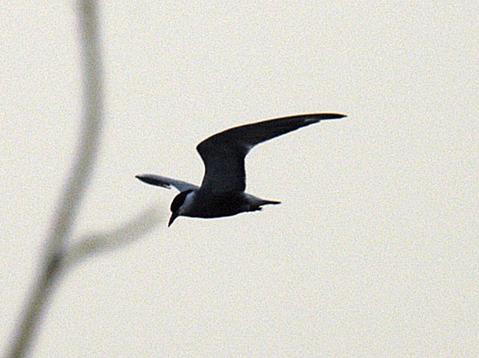
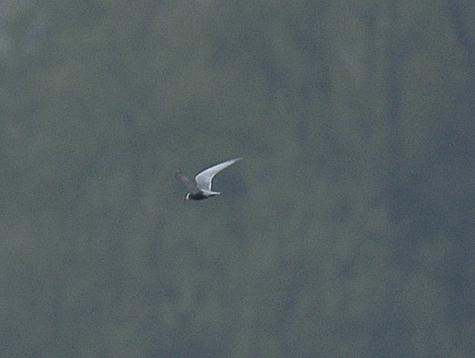
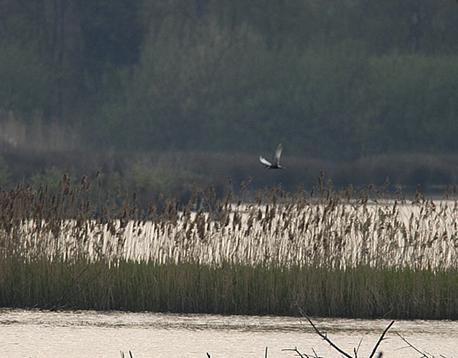
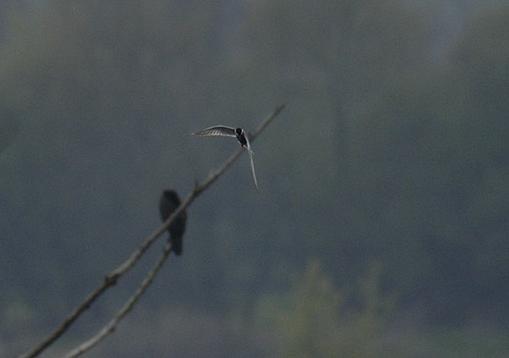
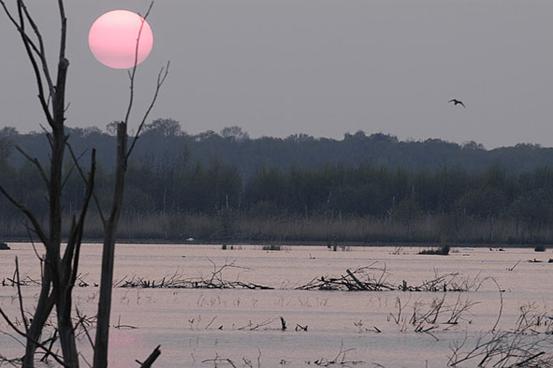
Above – whiskered tern, Shapwick Heath, 25 April. Below – cormorants, cuckoo, roebuck and sunsets.
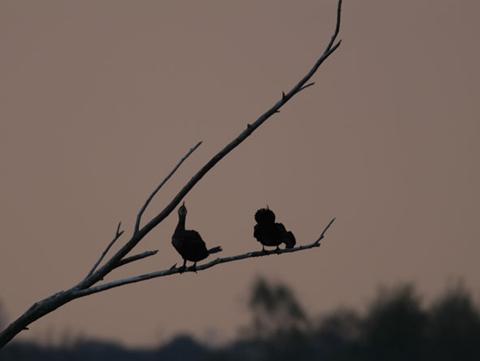
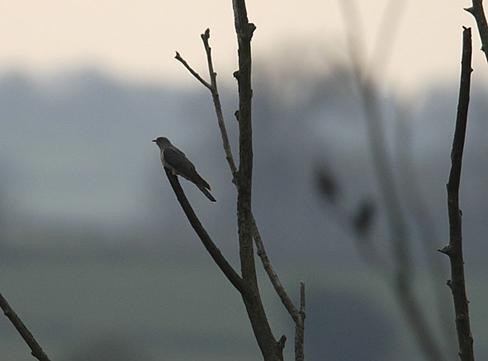
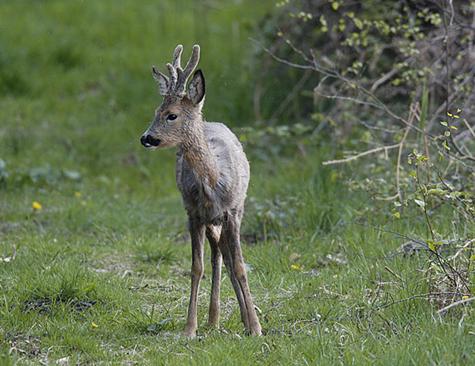
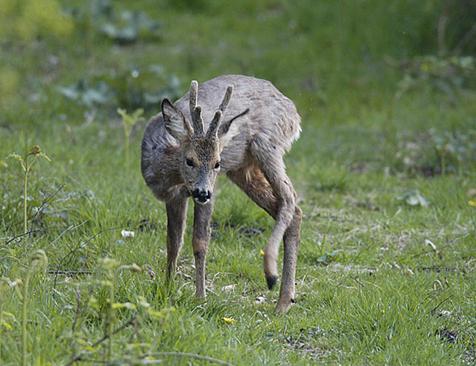
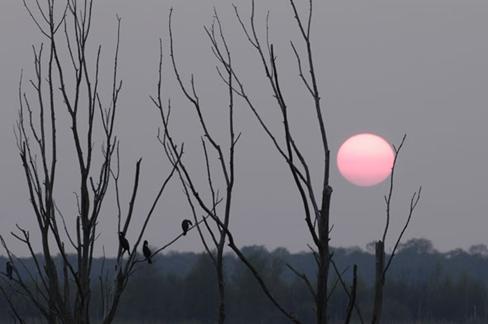
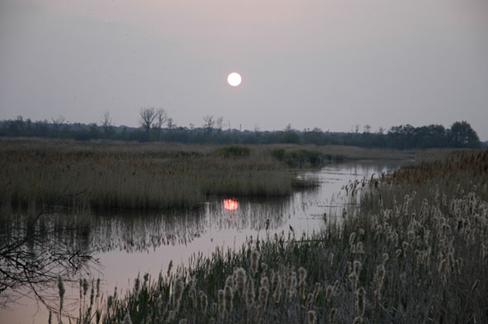
Monday 26 April
Some bat photographs from Box mines – lesser horseshoe bat (left), whiskered bat (right).
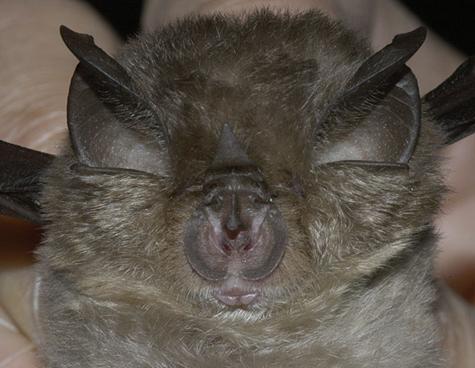
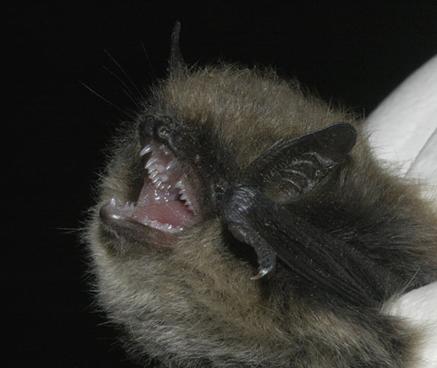
Thursday 29 April
Lydney – marsh near railway station, early evening – at least one RED-RUMPED SWALLOW feeding amongst a large mixed flock of hirundines. Distant views, and apparently 2 birds present. Cool, showery weather has resulted in hirundines congregating over water, and feeding low.
Saturday 1 May
There has been a large influx of red-rumped swallows into Britain. Michael Pocock and I went to view one confiding bird at West Huntspill this morning. We also saw a kingfisher carrying a fish here. We also visited Catcott (quiet), Cheddar reservoir (hundreds of hirundines, mainly house martins, 1 hobby) and Chew (hundreds of swifts, heard cuckoo, missed an osprey by 2 mins).
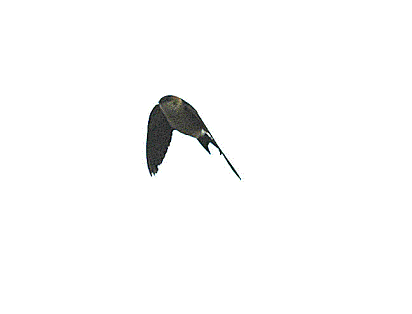
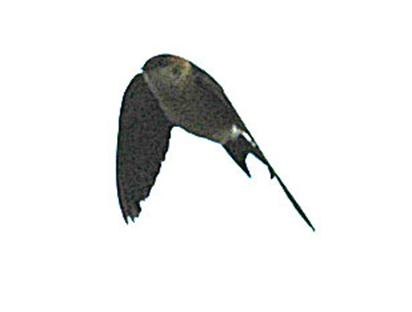
In the evening went to Barrow tanks, looking for yellow wagtails, but they’d moved on when I arrived at 20.00h. Saw 5 common sandpipers and a summer plumage dunlin.
Sunday 2 May
Barrow tanks in morning. Photographed pied and grey wagtails, and 2 whites. No yellows present though. Also saw 1 common sandpiper, 2 reed buntings, 1 garden warbler and 2 whinchats.
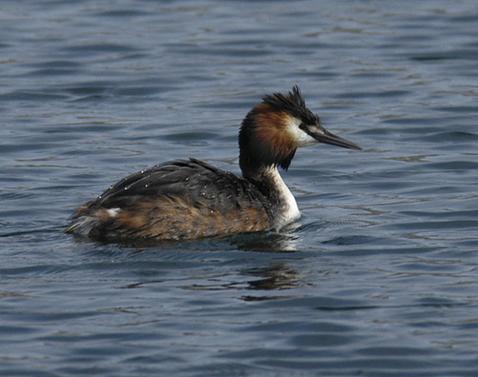
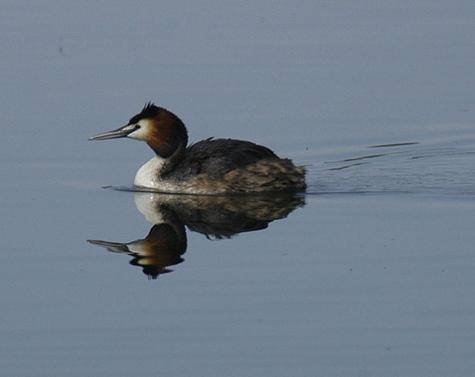
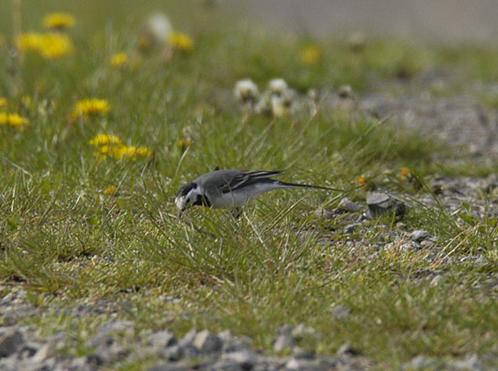
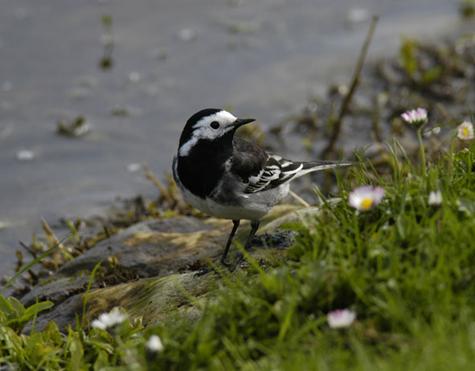
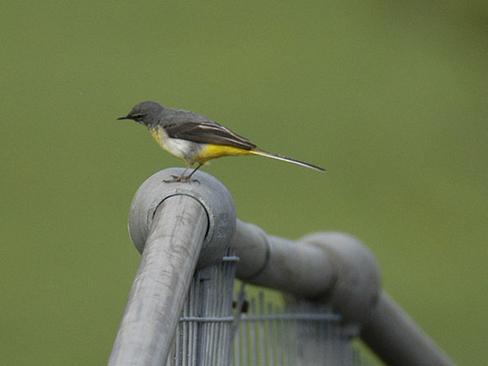
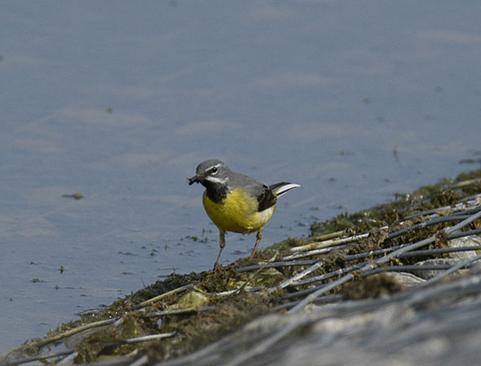
The farmland around the reservoir looks excellent for wildlife – good hedgerows and fields full of cowslips. I saw a female roe deer and a group of 5 brown hares in these fields.
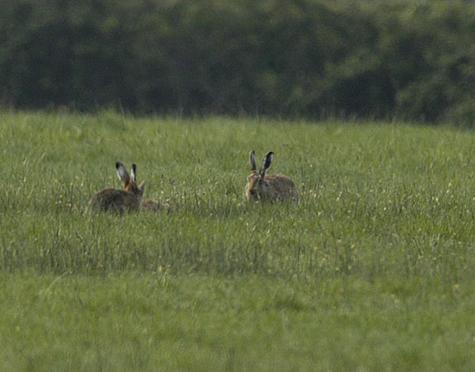
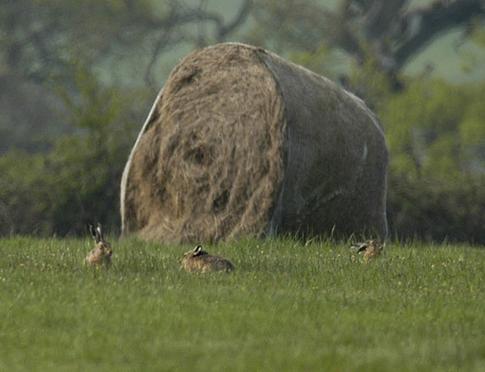
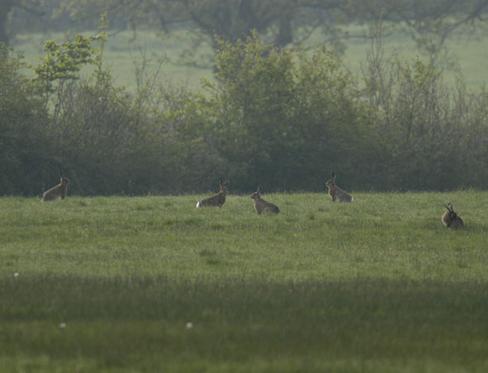
In the evening I made a trip to the Severn estuary, and saw 3 whinchats, 8 wheatears, ca. 20 whimbrel, and a lesser whitethroat at Northwick wharf, and 1 whinchat and heard lots of singing sedge warblers at Chittening wharf.
Monday 3 May
Berrow beach in evening – strong winds produced 2 manx shearwater offshore. Many waders at high tide, including ringed plover, dunlin, and sanderling in winter and summer plumage.
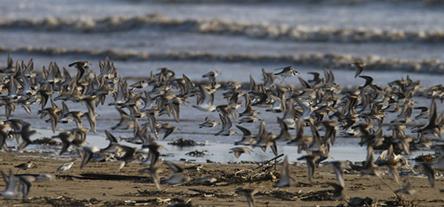

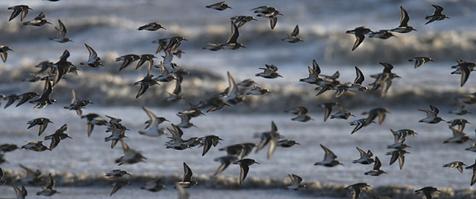



Tuesday 4 May
Severn beach in strong winds (NW?) at high tide in evening. Massive seabird activity, including 130 kittiwakes, 2 Arctic terns, and a flock of at least 22 POMARINE SKUAS, looking very bulky as they flew some distance offshore. I missed a Sabine’s gull (adult) seen earlier.
Thursday 6 May 2004
Quick walk around Barrow tanks 1 & 2 – 1 white wagtail, many house martins, 1 reed bunting, 2 common sandpipers. Backwell lake in evening – singing male reed warbler, male bullfinch and 40 mute swans. 4 brown hares seen.
Saturday 8 May 2004
Walked up Wavering Down in afternoon. Cool, cloudy with westerly wind. Three sightings of Dartford warbler, breeding stonechats, 2 wheatears, a cuckoo (heard), a tree pipit, and a red fox. Highlight was a male MONTAGU’S HARRIER which I eventually found between Crook Peak and Compton Hill. Very slim bird, with large black patches on the wings.



Sunday 9 May
Shapwick heath in afternoon – heard cuckoos, saw 8 little egrets, 5-10 hobbies, and the female red-crested pochard.





Wednesday 12 May
Garganey drakes on Heron’s Green and Herriot’s Pools at Chew in evening. The one at Heron’s Green was chased by a shelduck. Also heard raven and cuckoo.


Saturday 15 May
Heard cuckoo in the dawn chorus this morning at Flax Bourton, and watched a hobby from the back garden. Warm, sunny day. Quick trip to Barrow tanks in evening – quiet. Photographed male goldfinch and mallards (one female had 8 chicks).



Sunday 16 May
Chew – in morning two drake garganey on Herriot’s Pool. Photographed drake pochard x canvasback hybrid (below). Cuckoo calling.

By evening there were 4 drake garganey, beautiful in the evening light.


Also photographed pochard, mallard. Canada goose, ruddy duck.




Saturday 22 May
Brief visits to Chew in evening – drake Garganey still on Herriot’s Pool, Egyptian goose now at picnic area. 16 Shelduck adults.

Sunday 23 May
In the evening visited Goldcliff GLWR (Monmouthshire) for the first time. Saw the Avocet chicks – 6 adults, and broods of 2 and 3 offspring. Also a spoonbill which flew up high, headed NE and eventually came down W of Llanwern, a peregrine, ringed plover and oystercatchers with chicks, one little ringed plover, and most surprisingly a long-tailed duck, perhaps a first-year female?





Sunday 30 May
Drove to Stockhill plantation in the Mendips in the evening with the family and Max. Little owl on a telegraph pole in Barrow Gurney on the way, and at Stockhill heard a couple of nightjars churring, and saw two close up, one landing on a fence pole briefly, another touching the top of a conifer, maybe to glean an insect. Their stuttered wingbeats were impressive as they flew down the ride along a young conifer plantation. Didn’t see any white on the wings, so probably 2 females.
Thursday 3 June
Walked around Puxton Moor with Anna – lots of singing sedge warblers, and saw one brown hare and a dead young grass snake.
Saturday 5 June
Parkend, Forest of Dean in afternoon. Many pied flycatchers feeding young in nestboxes, one pair of redstarts feeding young in a tree crack, 5+ wood warblers singing. Lots of grey squirrels in the woods. On the return journey saw 2 mandarins and a dipper on the stream by the pub in Parkend village.
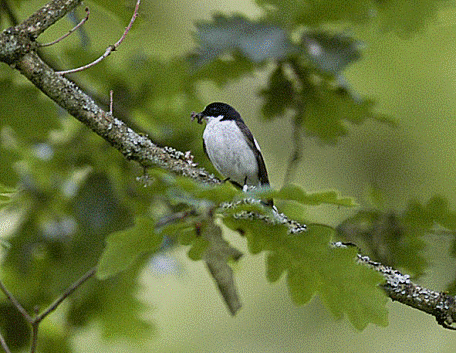





Monday7-Wednesday 9 June
External examining at Royal Holloway, University of London. Several views of ring-necked parakeets, including one feeding in a cherry tree in Englefield Green.
Wednesday 9-Wednesday 16 June
Teaching a field course at Orielton, Pembroke. There are soprano pipistrelles and lesser horseshoe bats (below) roosting on site. Greater horseshoe bats, common pipistrelles, noctules and Daubenton’s bats around Stackpole, and noctules at Pembroke Mill Pond (though no Daubenton’s bats caught here for the first time in 10 years).

Bird highlights were peregrine, kittiwakes, guillemots, razorbills, fulmar, gannets, one puffin, and a strong movement of manx shearwaters ((11th) at Stack Rocks. At least 2 choughs here also. Puffin off Stackpole head also, and several wheatears on the cliffs.








Around the labs at Orielton, there were 2 hummingbird hawkmoths and nesting house martins.





Saturday 19 June
Late evening visit to Barrow tanks to see the drake ring-necked duck. Lots of swifts here too.


Saturday 26 June
Heavy rain for most of the day, but a productive trip to Chew produced a pair of ferruginous ducks (below), a common sandpiper and a black-tailed godwit. Saw at least 1 first summer yellow-legged gull, and then spotted an adult on the photograph below! I then visited Blagdon lake to see my first spotted flycatcher for several years.




Sunday 27 June
Chew again late afternoon – took some photos of baby coots and great crested grebes. Large numbers of Canada geese now present to moult, and at least 9 barnacle geese too.



Spent some time photographing the pochard x red-crested pochard hybrid, the same bird that I digiscoped last year. One shot gives a size comparison with a male pochard. It spends a lot of time dabbling as well as diving, and approached close to Stratford hide. Paul Burrows believes the bird is a hybrid on account of its small size, atypical face markings, and grey, rather than white trailing edge to the wing (though looks fairly white in my photo below).



On the way back, a superb barn owl hunted in broad daylight at 18.00h over Heron’s Green pool.



A hobby over our house early evening, and a marbled white butterfly in the fields east of the village.
Monday 28 June
An evening trip to Marshfield, hoping to hear quail, but none calling. Lots of farmland birds however – stock dove, yellowhammers, skylarks and linnets. Highlights included a little owl near Down farm, 3 corn buntings singing between ST 792743 and 802753, my first grey partridge for many years at St 793743, many red-legged partridges (one below), ca. 4 brown hares and a badger.

Wednesday 30 June
Walked from Flax Bourton to Backwell Common – saw a brown hare, fox, yellowhammers and a pair of spotted flycatchers on the edge of the woodland patch W of Watercress wood.